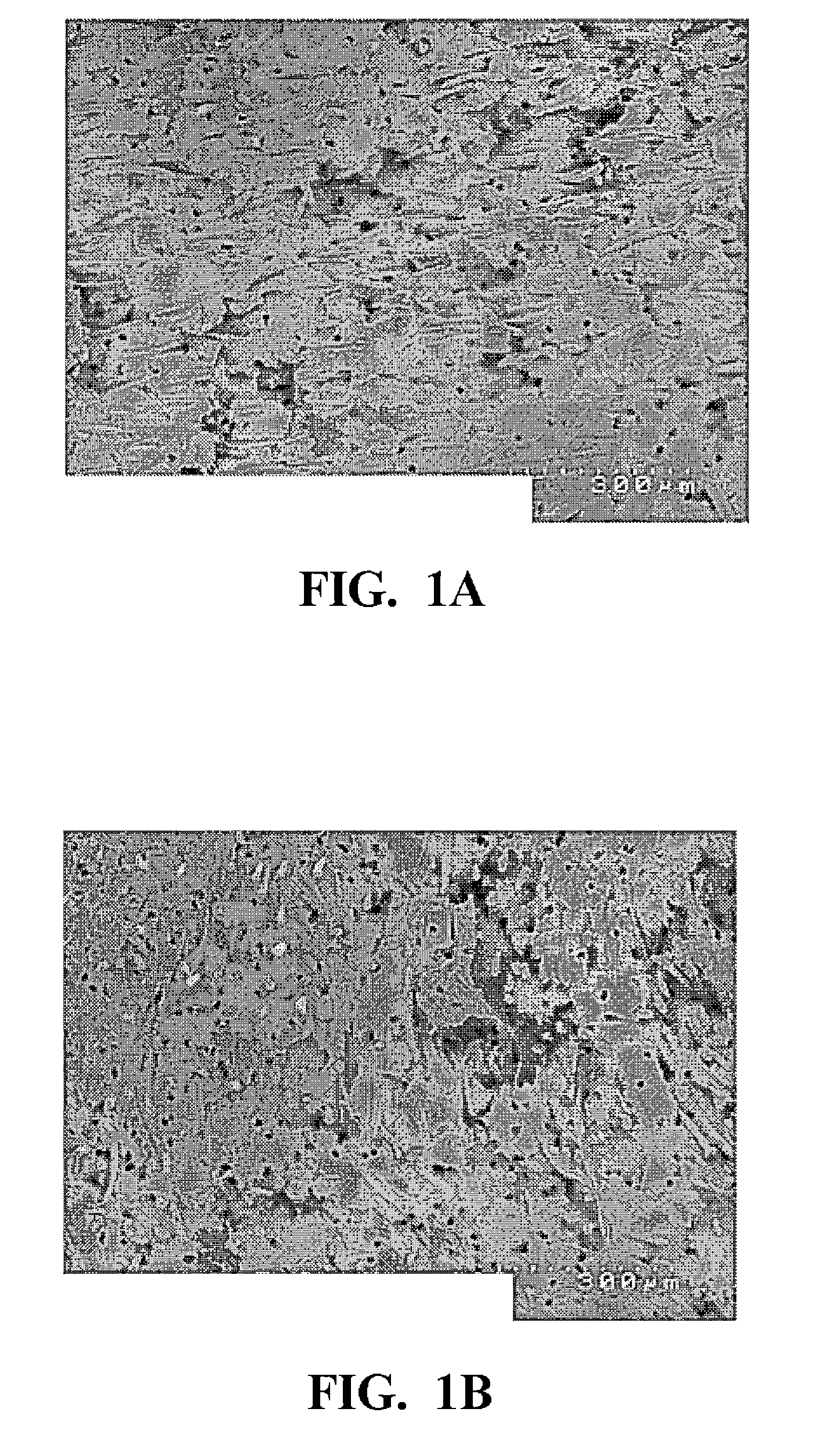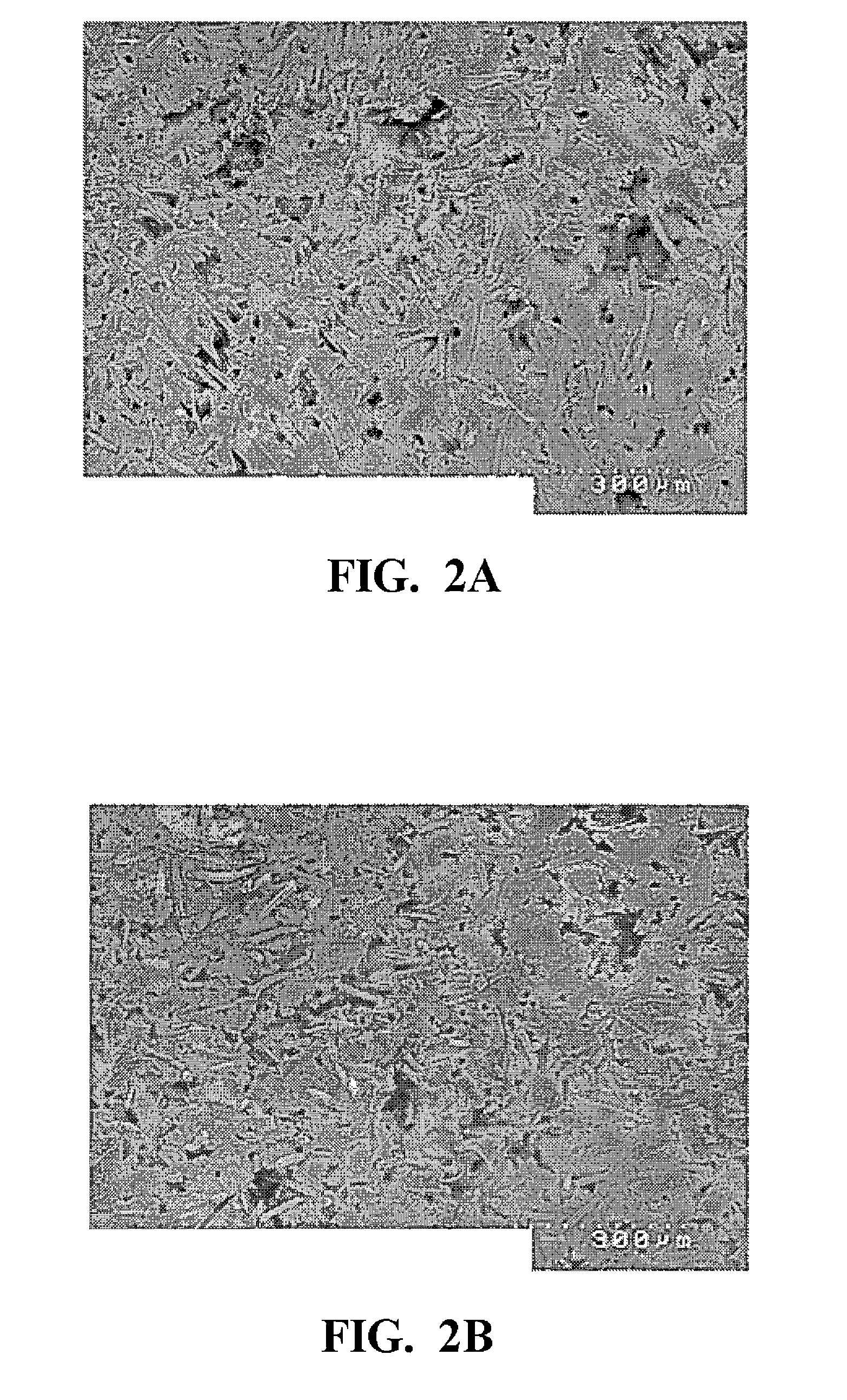Fluororesin and polyamide fiber composition, and sliding member made therefrom
a technology of polyamide fiber and polyamide fiber, which is applied in the direction of shaft and bearings, rotary machine parts, mechanical equipment, etc., can solve the problems of large number of commercial manufacturing processes of sliding members such as seal rings, significant waste and accompanying undesirable costs, and achieve high frictional wear characteristics and present inventions
- Summary
- Abstract
- Description
- Claims
- Application Information
AI Technical Summary
Benefits of technology
Problems solved by technology
Method used
Image
Examples
application examples
[0055]The present invention will be explained in further detail by application examples and comparative examples. However, the present invention is not intended to be limited by these examples.
Preparation of Manufacture Example 1
[0056]Wholly aromatic polyamide fibers with an average fiber diameter of 12 μm and an average fiber length of 100 μm were mixed with raw material PFA powder at a ratio of the aramid fibers at 10 parts by weight to the PFA powder at 90 parts by weight, charged into a henschel mixer, and mixed at the number of rotation of 3,400 rpm for 10 min. The powder mixture obtained was melt-mixed at 350° C. and 50 rpm for 3 minutes by using a batch type melt mixer (KF-70 manufactured by Tokyo Seiki Co., Ltd.) to obtain a composite composition. The composite composition obtained was cut by a pelletizer so that a pellet was obtained.
Preparation of Manufacture Example 2
[0057]An intended pellet was obtained by a method similar to that of Manufacture Example 1 except for mix...
application example 1
Frictional Wear Test
[0066]The pellets of Manufacture Examples 1-5 and Comparative Examples 1-3 prepared by the aforementioned methods were put into a prescribed mold (size: Ø35 mm, 150 mm), held at 350° C. for 3.5 hours to melt the resins, and cooled at room temperature while maintaining the compression at a pressure of 3.5 MPa for 1 hour, so that columnar molded parts with a diameter of 35 mm and a height of 43 mm were obtained. For the PTFE of Comparative Examples 4 and 5, the powder mixtures were, respectively, preliminarily molded under pressurization at 600 kg / cm2 and 300 kg / cm2, baked at 370° C. for 3 hours, so that columnar molded parts having 50 mm in diameter and 100 mm in height were obtained. From these columnar molded parts, rings with an outer diameter of 25.7 mm, an inner diameter of 20 mm, and a height of 20 mm were prepared by cutting and adopted as specimens. According to JIS K 7218 (A method) (JIS Handbook 26, plastic I test, 2005, Japanese Standards Association), ...
application example 2
Reciprocating Wear Test (I Type)
[0067]In order to further investigate the performance of the compositions of Manufacture Examples 3 and 4, a wear loss weight test in MD direction, CD direction, and thickness direction of injection-molded specimens was carried out under the conditions of a wear ring H-22, a load of 1,000 g, a stroke of 30 mm, a speed of reciprocation 60 times / min, a reciprocation cycle of 4,000 times, a temperature of 23±2° C., and a humidity of 50±5 RH by a reciprocating wear tester TYPE 30S (manufactured by Shinto Kagaku K.K.). The results are shown in the Table 2. Here, the MD direction means a direction (machine direction) vertical to a resin flow during molding, the CD direction means a horizontal direction (cross machine direction), and the TD direction means a thickness direction (transverse direction).
TABLE 2MD directionCD directionTD direction(mg)(mg)(mg)Manufacture47.645.767.9Example 3Manufacture36.837.750.2Example 4
[0068]In any of these compositions, it wa...
PUM
| Property | Measurement | Unit |
|---|---|---|
| length | aaaaa | aaaaa |
| diameter | aaaaa | aaaaa |
| fiber length | aaaaa | aaaaa |
Abstract
Description
Claims
Application Information
 Login to View More
Login to View More - R&D
- Intellectual Property
- Life Sciences
- Materials
- Tech Scout
- Unparalleled Data Quality
- Higher Quality Content
- 60% Fewer Hallucinations
Browse by: Latest US Patents, China's latest patents, Technical Efficacy Thesaurus, Application Domain, Technology Topic, Popular Technical Reports.
© 2025 PatSnap. All rights reserved.Legal|Privacy policy|Modern Slavery Act Transparency Statement|Sitemap|About US| Contact US: help@patsnap.com



